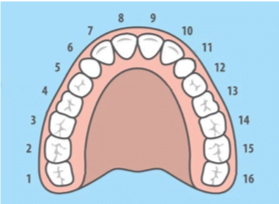One of the top fears in the world is the fear of needles. About 10% of the general population suffers from such fears. This can make going to the dentist something to be feared because typical anesthetics are administered using needles.
A needleless anesthesia, called Kovanaze, might be a beneficial practice to ease the anxiety of needles and save patients from injections overall.
The History of Needleless Anesthesia
Since the 1940s, the use of Tetracaine (also known as amethocaine) has been used for eyes, nose and throat treatments. It is a local anesthetic, typically applied in liquid form to the desired area. It wasn’t until patients began to inform doctors that when used for nasal treatments, that their upper lip was also numb. This led researchers to look into the compound for dental applications.
About a decade ago, a pharmaceutical company called St. Renatus developed Kovanaze which was a combination of 3% Tetracaine and 0.05% Oxymetazoline. On June 29th, 2016 it was approved for dental use by the Food and Drug Administration. It is the first approved nasal anesthia.
What is Kovanaze Anesthesia and How is it Used?
Tetracaine is a very temporary anesthetic, approximately lasting only 15 minutes. This makes it quite difficult to work on a patient in such a tight time limit, especially for intricate dental procedures. With the addition of Oxymetazoline, the duration was increased because it slows the systemic absorption of tetracaine.
Using it is extremely simple. Spray into the nostril that corresponds with the side in which the patient is having work on followed by another spray 4-5 minutes later. It is important to wait 10 minutes to ensure the effects are working, if not another spray may be administered for adults only.
The nasal spray treats the upper anterior teeth, specifically teeth 4-13 (See image). Initial tests resulted in an 84% success rate for teeth 4-13 and 96% effective for teeth 5-12. The premolars seem to have less success in having a consistent and reliable result using Kovanaze.

Additional testing has been conducted since with fantastic results. Out of 186 subjects, only two had any pressor response. This was likely caused by the Oxymetazoline component. A history of Hashimoto’s thyrotoxicosis, a relative contraindication to oxymetazoline, was found in one of the pressor response patients.
Kovanaze is unique because it does not anesthetize the lips. Dentists performing anterior restorations could find this to be invaluable. Precision is greatly improved for the placement of veneers and crowns. Additionally, due to the ability to move the lip in a natural way, patients are able to have more aesthetically pleasing results.
Drawbacks of Kovanaze Needleless Anesthesia
As with any medical procedure, there are of course risks associated with it.
Approximately 10% of patients have identified the following possible temporary side effects:
- Rhinorrhea
- Nasal congestion
- Increased lacrimation
- Nasal discomfort
- Oropharyngeal pain
Like all other local anesthetics, there are limitations to who may be administered it. Children under 88 lbs, patients with uncontrolled hypertension, thyroid disease or taking MAOIs (Monoamine Oxidase Inhibitors) should not be given it.
Due to the fact that this is a very localized anesthetics, it is limited to only the maxillary and premolar anterior. For any of restorative work outside this region would require an injection to complete.
Kovanaze is limited for hygiene procedures such as scaling and root planing because of unpredictable gingival conditions. Further testing will be conducted to determine if it will be able to produce the desired result.
This exciting new development allows for people to now have the choice to have an injection or not. Many people would jump at the chance to avoid it.
It is not only good for patients but also practitioners because it can put patients at ease and lowers the fear of the dentist office.
As this company continues to develop and improve this product, it’s our hope that new insights will be found that furthers the use for Kovanaze. Many people would prefer this option over an injection so if it can be used for more than just the maxillary and premolars of the anterior, it should be!


